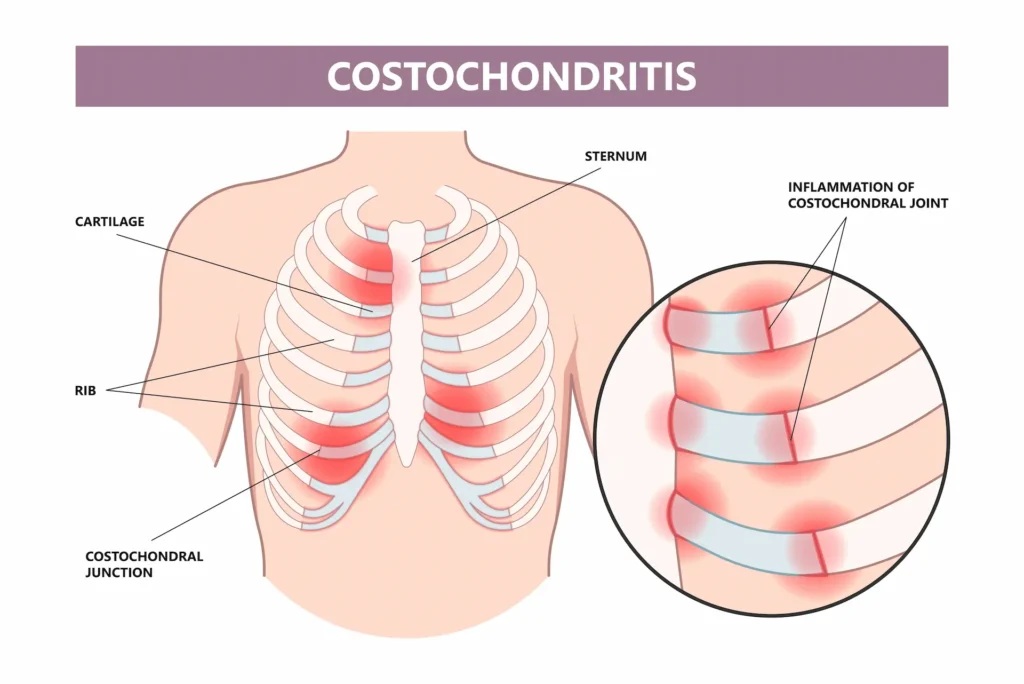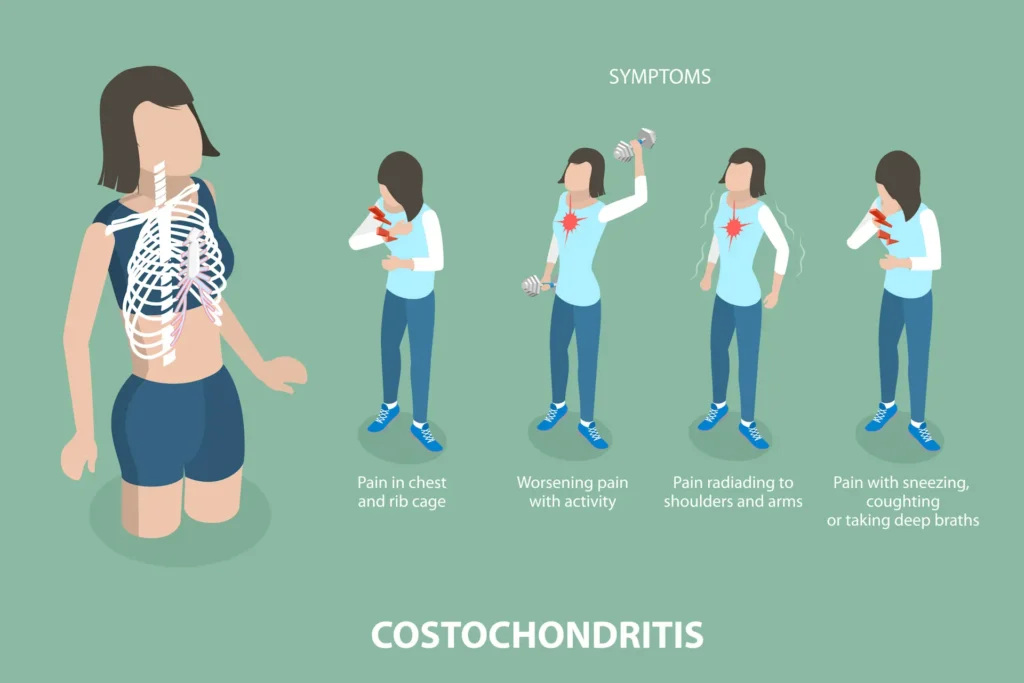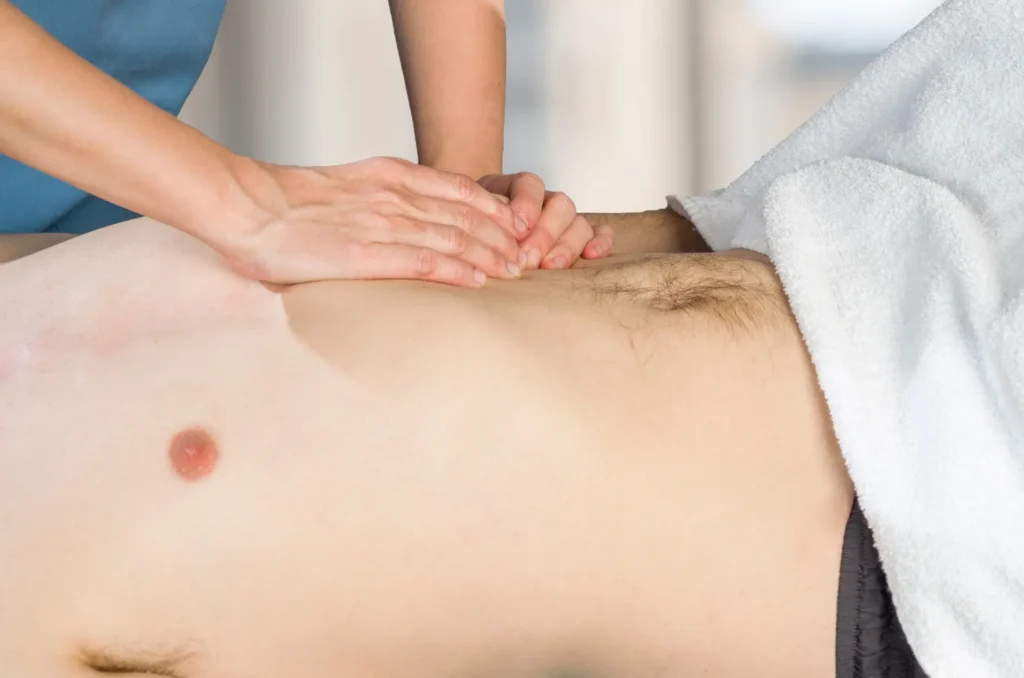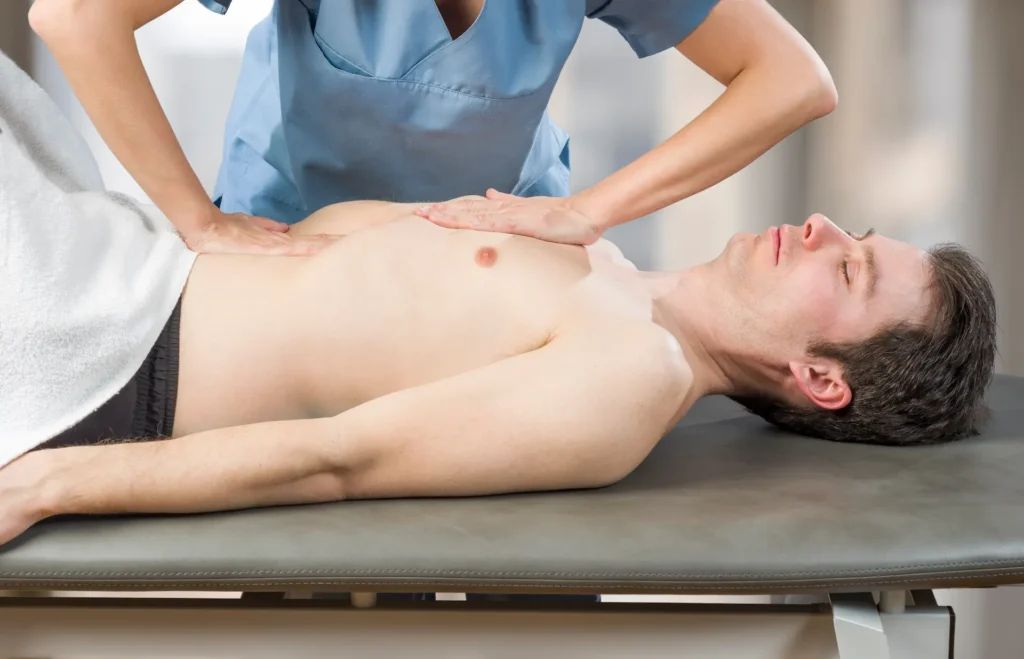That persistent ache in your chest wall, right where your ribs meet your breastbone – if you’re dealing with this kind of pain, you might have costochondritis, also known as chest wall inflammation or rib joint inflammation.
As a bodywork therapist, I see many clients who’ve been dealing with this uncomfortable condition, often feeling frustrated because they’re not sure what’s causing it or how to find relief.

Costochondritis happens when the cartilage connecting your ribs to your breastbone becomes inflamed. While it can be quite painful and concerning, it’s not dangerous or life-threatening, though you should always get checked by a doctor to rule out other conditions.

Costochondritis typically shows up as:
Common causes include:

When you’re dealing with chest wall inflammation, the right kind of hands-on therapy can make a world of difference. Bodywork helps by:
Think of it like this: if your chest wall is a door that’s stuck, bodywork helps oil the hinges and realign the frame, making everything work smoothly again. Let’s explore the specific techniques we use to achieve these results.

Think of your chest muscles and tissue like a tight sweater that needs gentle stretching. We use soft, steady pressure to help everything relax and move better. Here’s why it’s often our first approach:
I had a client, Lisa, who described her chest pain as “wearing a shirt that’s two sizes too small.” After a few myofascial release sessions, she finally felt like she could take a full breath again.
You know those tender spots that hurt when you press them? Those are trigger points – tight knots in your muscles that can cause pain. We focus on:
While it might look strange, cupping is great for chest pain. It’s like a gentle vacuum that:
This gentle approach helps your ribs move more freely. We work on:
While each of these techniques can be powerful on their own, the real magic often happens when we combine them based on your specific needs. Our therapists are skilled at determining which approaches will work best for your particular case of costochondritis, ensuring you get the most effective treatment possible.
Michael came to see us after a scary trip to the emergency room with chest pain that felt like a heart attack. Since he’d had a heart attack before, he was very worried about the tightness in his chest, trouble breathing, and pain. After thorough testing, doctors ruled out a heart attack and diagnosed him with costochondritis.
I worked with Michael using a combination of myofascial release and gentle trigger point therapy to release the tight, sore areas around his chest and ribs. After just one session, Michael experienced immediate relief – he could breathe easily again, and his chest pain was gone.
Michael’s story shows how the right kind of bodywork can help reduce pain and help you feel better, even after a scary health experience.isode.
From your first session, we focus on easing your pain right away and learning how your body responds. Many clients feel better after just one visit, with easier breathing and less chest tightness.
In your second session, we blend different techniques that work best for your body, building on what we learned. Most clients feel much better after two visits, with less pain and easier movement.
Everyone heals differently. Some people find relief quickly in a few sessions, while others need more time to fully recover. What matters is finding what works for you – this might mean weekly sessions when pain is at its worst, or monthly visits to keep the pain from coming back.
As we work together, we adjust our approach based on how your body responds. Our goal is simple: to help you feel better for the long run, so you can get back to doing what you love without pain getting in the way.

You don’t have to live with chest wall pain. Our experienced therapists specialize in treating costochondritis with gentle, effective techniques that get results. Schedule a consultation today to take your first step toward relief.
Your first visit includes a thorough evaluation, immediate relief techniques, and a personalized treatment plan to get you breathing easier and moving comfortably again.